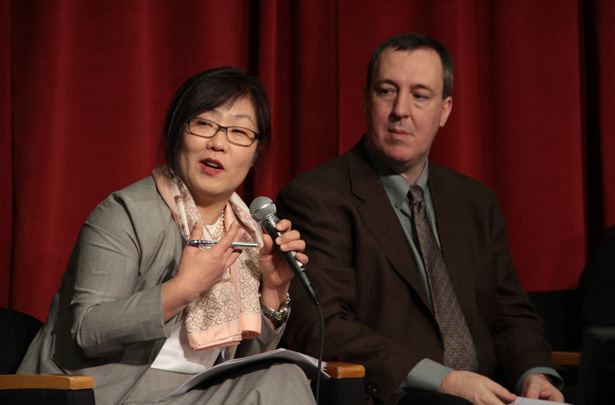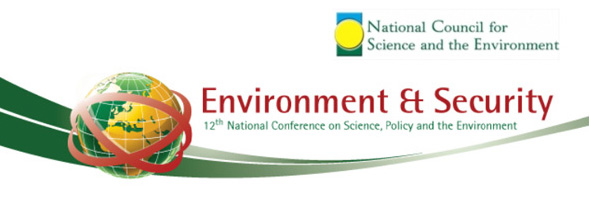-
Top 10 Posts for February 2012
›Great guest contributions and a couple of book previews helped fill out the top 10 last month, from Laurie Mazur on water and limits to growth, Pamela Griffin on the Ramsar Convention, and Elizabeth Leahy Madsen’s comprehensive look at Afghanistan’s first demographic and health survey to Jack Goldstone’s Political Demography and Marc Sommers’ Stuck.
1. Water and Population: Limits to Growth?
2. India’s Maoists: South Asia’s “Other” Insurgency
3. Guest Contributor Pamela Griffin: The Ramsar Convention: A New Window for Environmental Diplomacy?
4. Tunisia’s Shot at Democracy: What Demographics and Recent History Tell Us
5. UNEP Maps Conflict, Migration, Environmental Vulnerability in the Sahel
6. In Search of a New Security Narrative: The National Conversation Series Launches at the Wilson Center
7. Afghanistan’s First Demographic and Health Survey Reveals Surprises (Part One)
8. Stuck: Rwandan Youth and the Struggle for Adulthood (Book Preview)
9. Political Demography: How Population Changes Are Reshaping International Security and National Politics (Book Launch)
10. Peter Gleick: Population Dynamics Key to Sustainable Water Solutions -
Ryan Britton: Addressing Population in Science Media for ‘EarthSky’
›“What we do is educate the general public and advocate on behalf of science to the general public,” said EarthSky Managing Partner Ryan Britton in this interview with ECSP. “Ultimately we try to bring science to people who don’t normally get science information.”
Part of that effort is addressing population dynamics – growth, aging, youth, food security, etc. – which is often a challenging subject. EarthSky’s coverage over the last year included a series of radio shows on global food security and the “year of seven billion,” which won them a second Global Media Award from the Population Institute in January (alongside New Security Beat!).
EarthSky productions appear on television, radio, online, and in multiple languages. “For us, it’s about getting science out to the general public as best we can,” said Britton.
In terms of population-related issues, he said, allocation of resources, how growing population is affecting ecology and biodiversity, and the effects of climate change are all topics on their radar. “But we do it within the lens of talking about humanity and our continued prosperity,” Britton said. “That’s important for people to hear – what are the solutions, how are we going to get through this, how are we going to be OK? And so those are the questions we’ll keep asking.” -
Top 10 Posts for January 2012
›The event summary from December’s meeting on new climate-conflict research took the top place last month and was joined by several other new comers: Marc Bellemare’s post about his food prices research, new Sahel vulnerability maps from UNEP, a summary of the water security plenary from NSCE 2012, and new reports on youth demographics from UNICEF and the U.S. Institute of Peace.
1. New Research on Climate and Conflict Links Shows Challenges for the Field
2. Tunisia’s Shot at Democracy: What Demographics and Recent History Tell Us
3. In Search of a New Security Narrative: The National Conversation Series Launches at the Wilson Center
4. Guest Contributor Marc F. Bellemare: Do High Food Prices Cause Social Unrest?
5. In the Rush for Land, Is it All About the Water?
6. UNEP Maps Conflict, Migration, Environmental Vulnerability in the Sahel
7. Peter Gleick: Population Dynamics Key to Sustainable Water Solutions
8. India’s Maoists: South Asia’s “Other” Insurgency
9. Move Beyond “Water Wars” to Fulfill Water’s Peacebuilding Potential, Says NCSE Panel
10. Three New Reports Highlight Ongoing Significance of Youth Demographics in Global Trends -
Move Beyond “Water Wars” to Fulfill Water’s Peacebuilding Potential, Says NCSE Panel
›January 26, 2012 // By Schuyler NullOne of the best talks of last week’s NCSE Environment and Security Conference was thewater security plenary on Friday. Moderator Aaron Salzberg, who is the special coordinator for water resources at the Department of State, led with a provocative question: how many in attendance think there will be war over water in the future?
-
ECSP at the 12th Annual NCSE Environment and Security Conference
›January 17, 2012 // By Schuyler NullThe National Council for Science and the Environment’s 12th annual Environment and Security Conference starts tomorrow at the Ronald Reagan Building with a high profile line-up of speakers and participants, including Rajiv Shah, Gro Harlem Brundtland, Lisa Jackson, Marcia McNutt, Amanda Dory, Sherri Goodman, and more.
If you are attending, be sure to see ECSP’s own Geoff Dabelko on the opening plenary, “Integrating Climate, Energy, Food, Water, and Health,” at 9:30 a.m. tomorrow and the “Water and Conflict” symposium at 2:00 p.m.. We will also have a booth on the floor which we’d encourage you to swing by for more information on our work at the Wilson Center and upcoming events.
There are a host of panels on essentially every environment-security topic you can think of at the conference, so be sure to check out the full agenda for details. Follow our Twitter feed for updates and watch here for any news or interviews in the coming days too. -
Jon Barnett: Should Climate Change Be Addressed by the UN Security Council?
›For a small island state like Tuvalu, climate change is an enormous security issue and they have told the UN Security Council as much, said Jon Barnett, professor of resource management and geography at the University of Melbourne, in an interview with ECSP. But, despite debate in 2007 and 2011, the Council has been unable to reach agreement on whether climate change is an international security issue or not.
-
Top 10 Posts for 2011
›2011 was a momentous year for environment-population-security connections. Youth demographics came into the media spotlight with popular uprisings across the Middle East, we reached seven billion people on Earth, and there was new awareness about the importance of natural resource management in a more connected-than-ever world. Here are the most popular stories of 2011 on New Security Beat, measured by unique pageviews:
1. Tunisia’s Shot at Democracy: What Demographics and Recent History Tell Us
Tunisia’s “Jasmine Revolution” kicked-off the Arab Spring, but what are the country’s chances at achieving democracy? Demographer Richard Cincotta compares historical data on the relationship between age structure and democratic governments to find out.
2. In Search of a New Security Narrative: The National Conversation Series Launches at the Wilson Center
Captain Wayne Porter (USN) and Colonel Mark Mykleby (USMC) argued the United States needs a new national strategic narrative and presented their vision at the Wilson Center, saying that America needs to move away from a model of containment, deterrence, and control towards a “strategy of sustainability.”
3. Quantifying the Integration of Population, Health, and Environment in Development: When the Whole Is Greater Than the Sum of Its Parts
An article in Environmental Conservation broke new ground by presenting rigorous research that shows working across development sectors produces synergies not obtainable by any one of the disciplines alone.
4. How Did We Arrive at 7 Billion – and Where Do We Go From Here?
Demographer Elizabeth Leahy Madsen explained how world population reached seven billion this year, its significance, and where our demographic path might take us from here.
5. In the Rush for Land, Is it All About the Water?
With staple food prices shooting up and food security projected to worsen in the decades ahead, it is little wonder that countries are looking abroad to secure future resources. But the question arises: Are these “land grabs” really about the food – or, more accurately, are they “water grabs”?
6. Jon Foley: How to Feed Nine Billion and Keep the Planet Too
ECSP reports on Jon Foley’s presentation about the challenges to global food security as well as a strategy for overcoming them at South by Southwest’s inaugural eco conference.
7. Peter Gleick: Population Dynamics Key to Sustainable Water Solutions
Peter Gleick of the Pacific Institute explains in an interview with ECSP what role population dynamics play in his assessment of “peak water.”
8. Guest Contributor Jim Duncan: Redrawing the Map of the World’s International River Basins
Following on his presentation at the Wilson Center, water expert Jim Duncan outlined updates made to the Transboundary Freshwater Spatial Database, including the addition of 13 new basins covering 501,000 km2 and an estimated 13.8 million inhabitants.
9. Ten Billion: UN Updates Population Projections
The UN released an update to its biannual estimates for world population, extending projections for the first time to the end of the century. The results show that growth is likely to continue longer and total numbers will be higher than previously thought.
10. PRB’s Population Data Sheet 2011: The Demographic Divide
ECSP examined the Population Reference Bureau’s latest data sheet which shows an unprecedentedly stark divide between demographic trends in rich and poor countries.
Thanks for reading New Security Beat and also for your many constructive comments. We redesigned the blog in 2011 and plan to continue that modernization effort this year, all with the aim of better reaching you, so we’re grateful for your attention, feedback, and contributions.
Image Credit: Adapted from “Viva the Tunisian Revolution,” courtesy of flickr user freestylee (Michael Thompson). -
New Population, Health, and Environment Program for Lake Victoria
›With some of Africa’s highest population densities, ethnic diversity, and biodiversity, the Great Lakes region is one of the most volatile intersections of human development and the environment. A new population, health, and environment (PHE) initiative from Pathfinder International, announced Monday at the International Conference on Family Planning in Senegal, aims to help address these issues by supporting sustainable resource management and women’s right to choose when and how often they have children.
Jointly funded by the David and Lucile Packard Foundation and the John D. and Catherine T. MacArthur Foundation, with additional support from USAID’s Office of Population and Reproductive Health, the project will focus on Ugandan and Kenyan sections of the Lake Victoria basin.
Lake Victoria is the second largest freshwater source in the world, a biodiversity hotspot, and an important regional waterway, but regional population growth among the highest in Africa and economic development have led to declining water quality, reduced fish stocks, and industrial pollution. The basin as a whole supports upwards of 35 million people.
“This new project is a welcome development for many reasons,” said ECSP Director Geoff Dabelko. “It brings the integrated PHE approach to one of the world’s greatest lakes, it enables respected health NGO Pathfinder to pursue PHE efforts, and marks the return of a leading private donor, the MacArthur Foundation, to a group of foundations willing to support this innovative approach.”
Sono Aibe, senior advisor for strategic initiatives at Pathfinder emphasized the integrated challenges facing the region. “In these remote, resource dependent areas of the world, the interconnectedness between the health of people and the health of the environment is undeniable,” she said in a press release. “When women are empowered to participate in the sustainable management of natural resources alongside men and youth, as well as have access to sexual and reproductive health care services, their lives will improve and so will the condition of the ecosystems that they depend on.”
The project’s objective, according to Pathfinder, is to reduce threats to biodiversity, conservation, and ecosystem degradation by increasing access to family planning and sexual/reproductive health services. The project plans to develop scalable approaches that can be adopted by communities, local governments, and national governments. Technical support is to be provided by the BALANCED Project, ExpandNet, and the Population Reference Bureau.
“Lessons learned from this new project will help us better develop and design projects for vulnerable communities in fragile ecosystems, while simultaneously advocating for increased government support for integrated programs throughout the Lake Victoria Basin,” said Lucy Shillingi, Pathfinder’s country representative for Uganda.
The Lake Victoria effort will build upon the experiences of other integrated PHE efforts in the region, such as Rwanda’s SPREAD Project, Uganda’s Conservation Through Public Health, and Tanzania’s TACARE and Coastal Management Partnership.
Sources: Lake Victoria Basin Commission, Pathfinder International, UNEP.
Showing posts by Schuyler Null.







